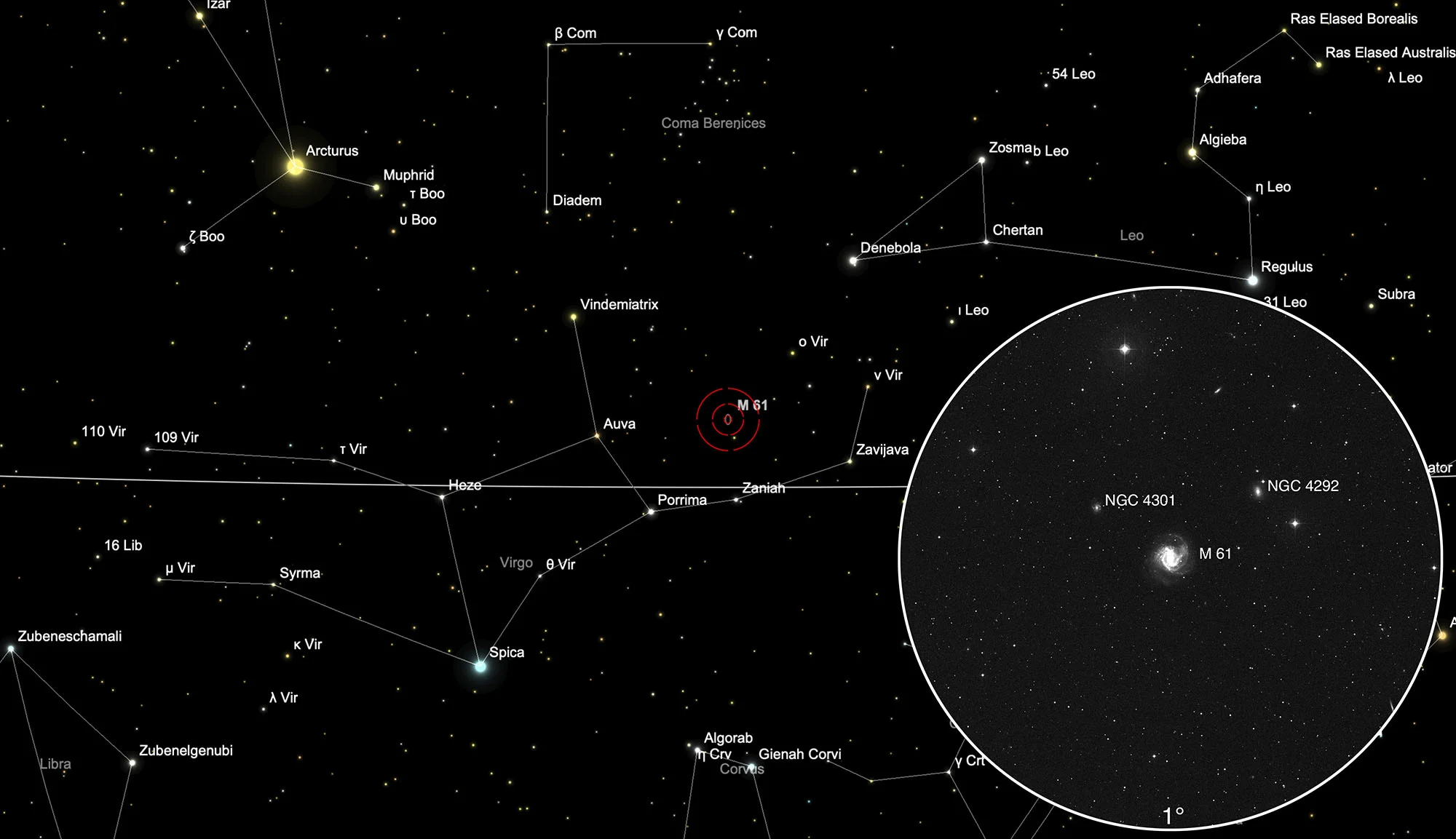Galaxy Messier 61
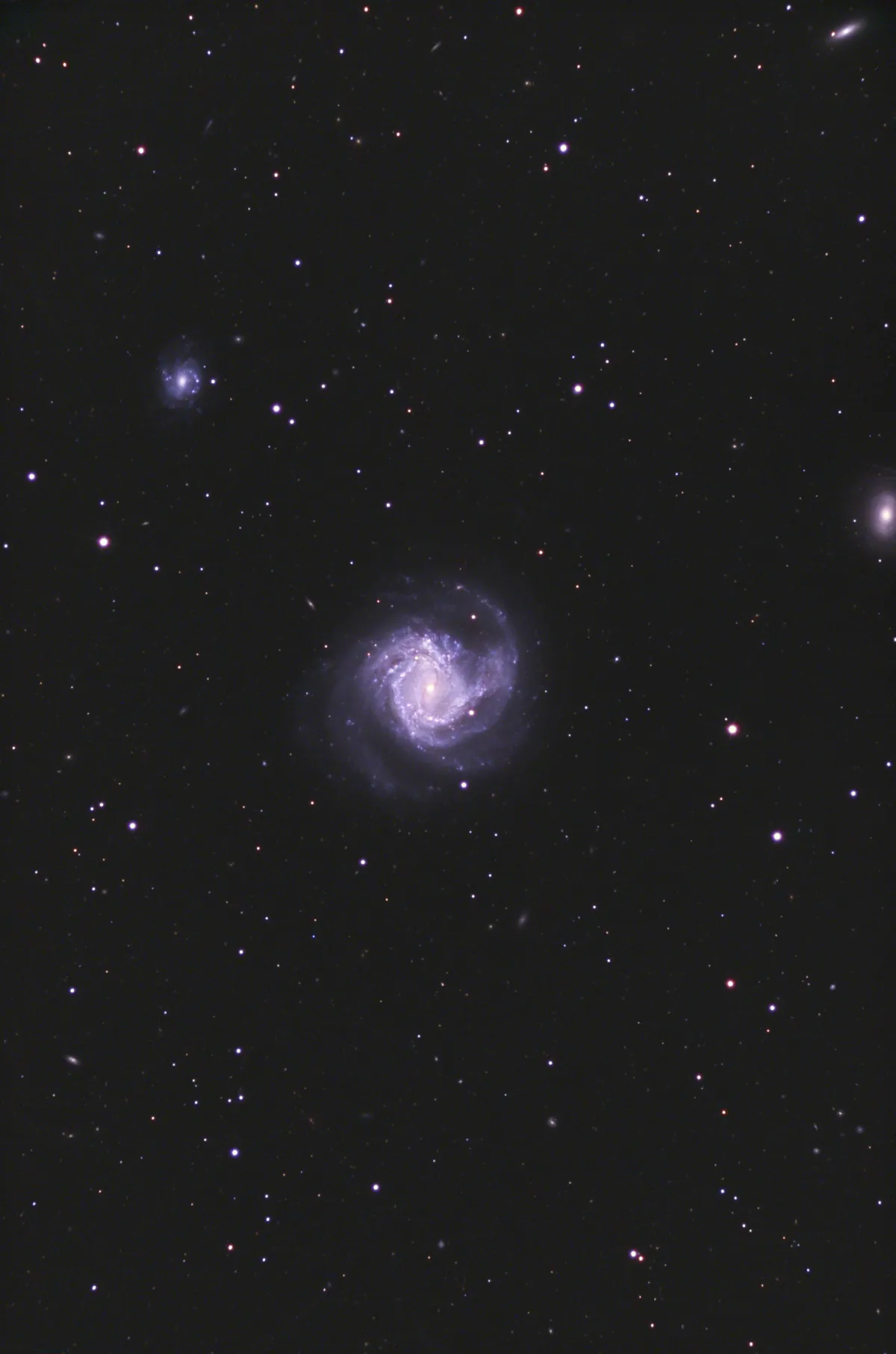
History
The galaxy Messier 61 was discovered by the Italian astronomer Barnaba Oriani in 1779. Charles Messier noticed it the same night as Oriani, but suspected it was a passing comet. He wrote: «Very faint nebula and difficult to see. M. Messier believed this nebula to be the comet of 1779, May 5th, 6th and 11th; on the 11th he realized that he was not the comet, but a nebula that was on his route at the same point in the sky.» [281]
Physical Properties

M 61 is a spiral galaxy of the morphological type Sc(dSc). At Simbad, measured heliocentric velocities in the last 20 years have been found in the range from 1566 km/s to 1579 km/s and measured distances from 10 Mpc to 19 Mpc (32 to 62 million light years). The galaxy belongs to the Virgo Galaxy Cluster (VCC 508), to which about 1300 galaxies belong. With a diameter of around 100'000 light years, it is about the same size as our Milky Way. M 61 is known as a starburst galaxy (Seyfert Type 2), which has a high rate of star formation and thus uses up its gas in (astronomically) a relatively short time. At least six supernovae have been observed in this galaxy so far. There is a strong X-ray source in the centre. [145, 189, 215]
| Name | RA | Dec | Type | bMag | vMag | B-V | SB | Dim | PA | z | D(z) | MD | Dreyer Description | Identification, Remarks |
|---|---|---|---|---|---|---|---|---|---|---|---|---|---|---|
| NGC 4303 | 12 21 54.9 | +04 28 22 | Gx (SBbc) | 10.2 | 9.7 | 0.5 | 13.5 | 6.5 × 5.9 | 162 | 0.005224 | 22.07 | 16.460 | vB, vL, vsbM *, biN | WH I 139; h 1202; GC 2878; M 61; UGC 7420; MCG 1-32-22; IRAS 12194+0444; CGCG 42-45; VCC 508 |
| NGC 4303 A | 12 22 27.2 | +04 33 57 | dup | 13.4 | 13.0 | 0.4 | 13.6 | 1.6 × 1.3 | 69 | 0.004246 | 17.93 | vB, vL, vsbM *, biN | WH I 139; h 1202; GC 2878; NGC 4301; UGC 7439; MCG 1-32-27; IRAS 12198+0450; CGCG 42-53; VCC 552 |
Further Galaxies in that Area
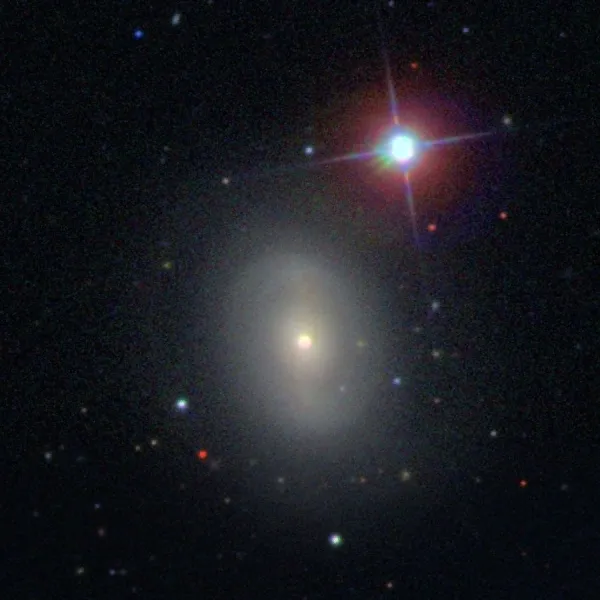
The galaxy NGC 4292 was discovered by John Herschel on 7 April 1828. The morphological type at Simbad is S0a-S0/Sa (i.e. lens-shaped) with a LINER-type active core. At NED it is given as (R)SB(r)0^0 (bar spiral with ring). The redshifts measured over the past 20 years correspond to a heliocentric speed of about 2260 km/s. The distance is about 17 Mpc to 20 Mpc (55 to 65 million light years). The galaxy is listed as a member of the Virgo Cluster with the number VCC 462. [145, 196]
| Name | RA | Dec | Type | bMag | vMag | B-V | SB | Dim | PA | z | D(z) | Dreyer Description | Identification, Remarks |
|---|---|---|---|---|---|---|---|---|---|---|---|---|---|
| NGC 4292 | 12 21 16.4 | +04 35 46 | Gx (SB0) | 13.1 | 12.2 | 0.9 | 12.8 | 1.6 × 1.2 | 7 | 0.007532 | 31.81 | F, S, R, vglbM, * 9 np 72" | h 1196; GC 2870; UGC 7404; MCG 1-32-16; CGCG 42-40; VCC 462; NPM1G +04.0344 |
| NGC 4292 A | 12 21 16.7 | +04 37 59 | Gx (E-S0) | 16.0 | 15.0 | 1.0 | 12.0 | 0.3 × 0.2 | 80 | F, S, R, vglbM, * 9 np 72" | h 1196; GC 2870 |
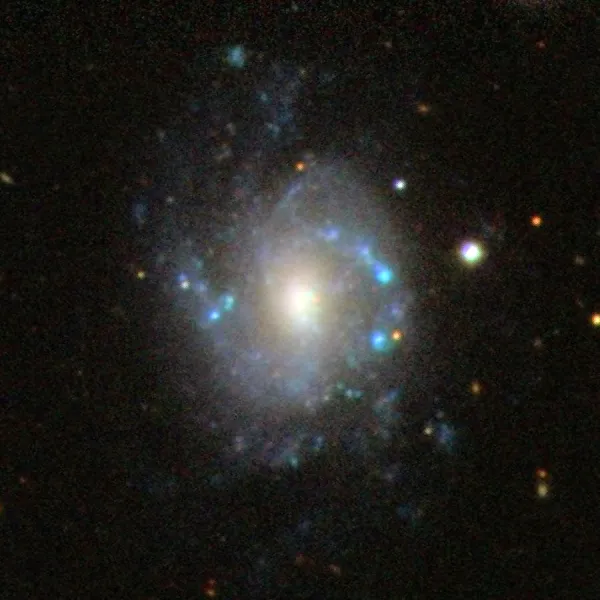
The galaxy NGC 4301 was discovered on 21 April 1851 by the Irish engineer Bindon Stoney. He worked for William Parsons, 3rd Earl of Rosse, and helped him with the mechanical construction of his telescopes. The galaxy is sometimes called NGC 4303A because it is close to NGC 4303 and has long been considered misidentified. According to Simbad, the galaxy is of the morphological type Sc(dSc). Measurements of redshift over the last 20 years are in the range 1278 km/s to 1296 km/s and measured distances range from 13 Mpc to 17 Mpc. (42 to 55 million light years). [145, 196]
| Designation | NGC 4301 |
| Type | Gx (SBc) |
| Right Ascension (J2000.0) | 12h 22m 27.2s |
| Declination (J2000.0) | +04° 33' 57" |
| Diameter | 1.6 × 1.3 arcmin |
| Photographic (blue) magnitude | 13.4 mag |
| Visual magnitude | 13.0 mag |
| Surface brightness | 13.6 mag·arcmin-2 |
| Position Angle | 69° |
| Redshift (z) | 0.004246 |
| Distance derived from z | 17.93 Mpc |
| Dreyer Description | F, E, 10' nf h 1196 |
| Identification, Remarks | GC 2884; NGC 4303A; UGC 7439; MCG 1-32-27; IRAS 12198+0450; CGCG 42-53; VCC 552 |
Finder Chart
In the constellation Virgo, a little outside the Virgo Cluster, the spiral galaxy M61 can be found almost alone, about halfway between the stars Auva (δ Virginis, 3.42 mag) and ν Virginis (4.03 mag). There are two weaker galaxies NGC 4292 and NGC 4301 in the immediate vicinity.
Visual Observation
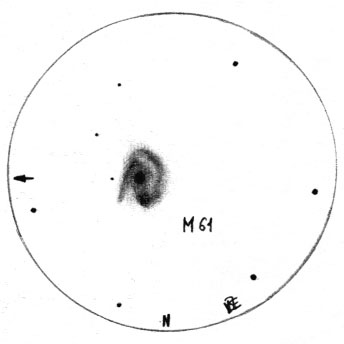
In contrast to most of the siblings in the Virgo Cluster, the galaxy shows some structure in medium-sized telescopes. The striking, somewhat extended core is striking. The two spiral arms are individually recognizable. One arm is also clearly longer and shows differences in brightness. A medium-sized enlargement is advantageous for observation, in which the sky background is already neatly darkened to black. [192]
